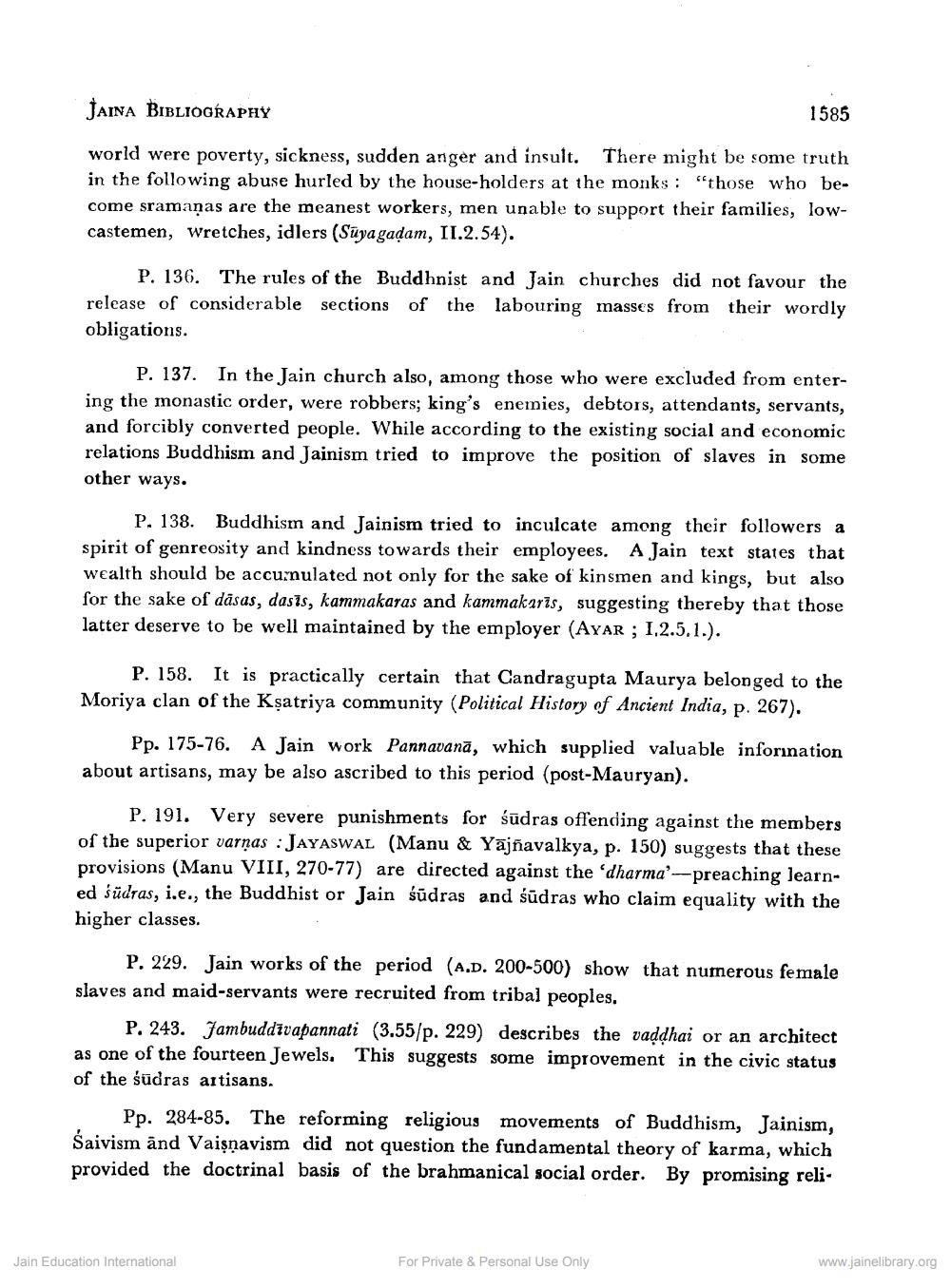________________
JAINA BIBLIOGRAPHY
1585
world were poverty, sickness, sudden anger and insult. There might be some truth in the following abuse hurled by the house-holders at the monks : "those who become sramaņas are the meanest workers, men unable to support their families, lowcastemen, wretches, idlers (Suya gaļam, II.2.54).
P. 136. The rules of the Buddhnist and Jain churches did not favour the release of considerable sections of the labouring masses from their wordly obligations.
P. 137. In the Jain church also, among those who were excluded from entering the monastic order, were robbers; king's enemies, debtors, attendants, servants, and forcibly converted people. While according to the existing social and economic relations Buddhism and Jainism tried to improve the position of slaves in some other ways.
P. 138. Buddhism and Jainism tried to inculcate among their followers a spirit of genreosity and kindness towards their employees. A Jain text states that wealth should be accurnulated not only for the sake of kinsmen and kings, but also for the sake of dāsas, dasīs, kammakaras and kammakarīs, suggesting thereby that those latter deserve to be well maintained by the employer (AYAR ; 1.2.5.1.).
P. 158. It is practically certain that Candragupta Maurya belonged to the Moriya clan of the Ksatriya community (Political History of Ancient India, p. 267).
Pp. 175-76. A Jain work Pannavanā, which supplied valuable inforination about artisans, may be also ascribed to this period (post-Mauryan).
P. 191. Very severe punishments for sūdras offending against the members of the superior varnas : JAYASWAL (Manu & Yājñavalkya, p. 150) suggests that these provisions (Manu VIII, 270-77) are directed against the 'dharma'--preaching learned šūdras, i.e., the Buddhist or Jain śūdras and sūdras who claim equality with the higher classes.
P. 229. Jain works of the period (A.D. 200-500) show that numerous female slaves and maid-servants were recruited from tribal peoples.
P. 243. Jambuddivapannati (3.55/p. 229) describes the vaddhai or an architect as one of the fourteen Jewels. This suggests some improvement in the civic status of the śüdras artisans.
Pp. 284-85. The reforming religious movements of Buddhism, Jainism, Śaivism and Vaişnavism did not question the fundamental theory of karma, which provided the doctrinal basis of the brahmanical social order. By promising reli
Jain Education International
For Private & Personal Use Only
www.jainelibrary.org




